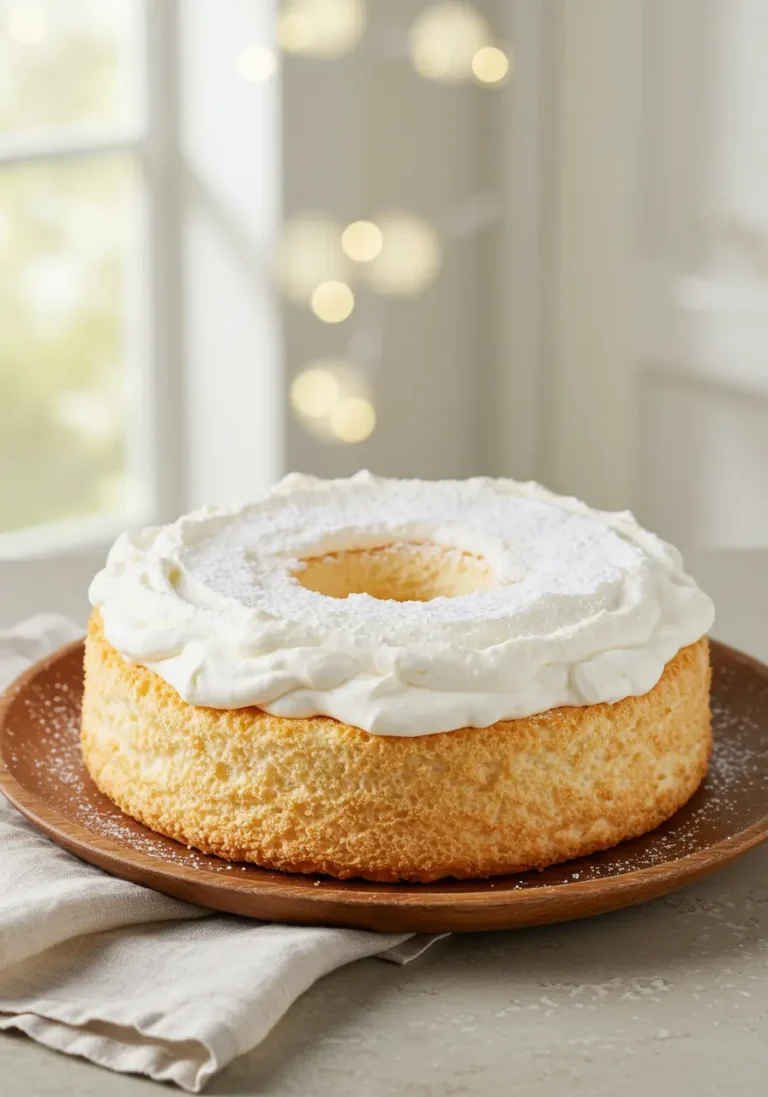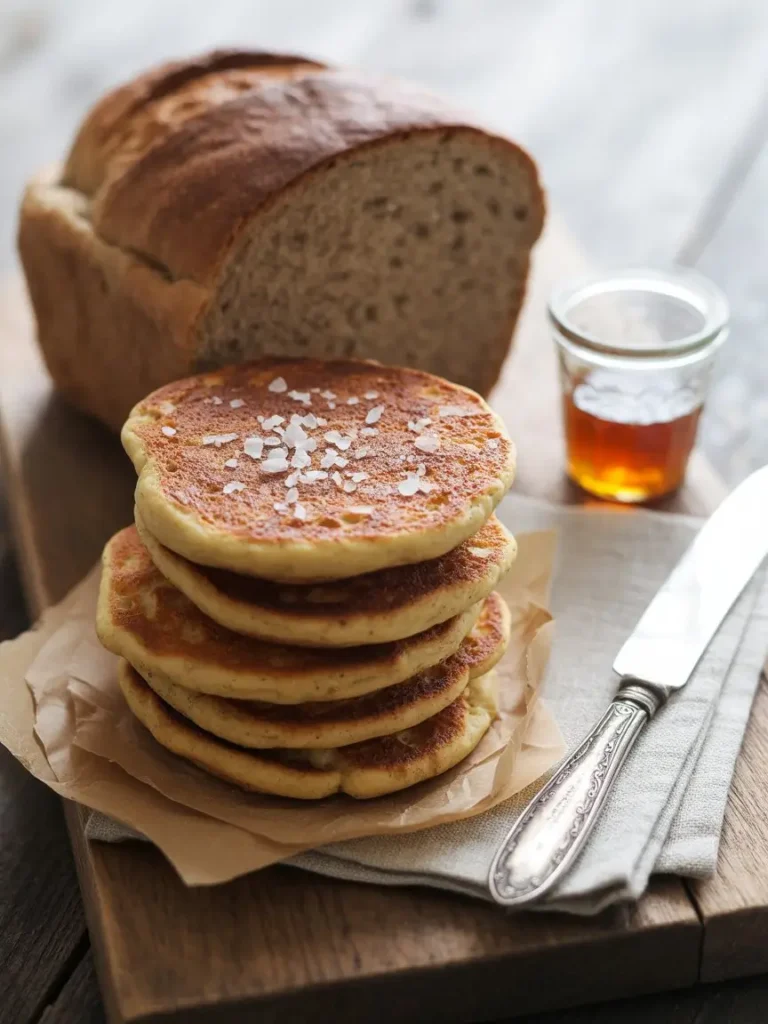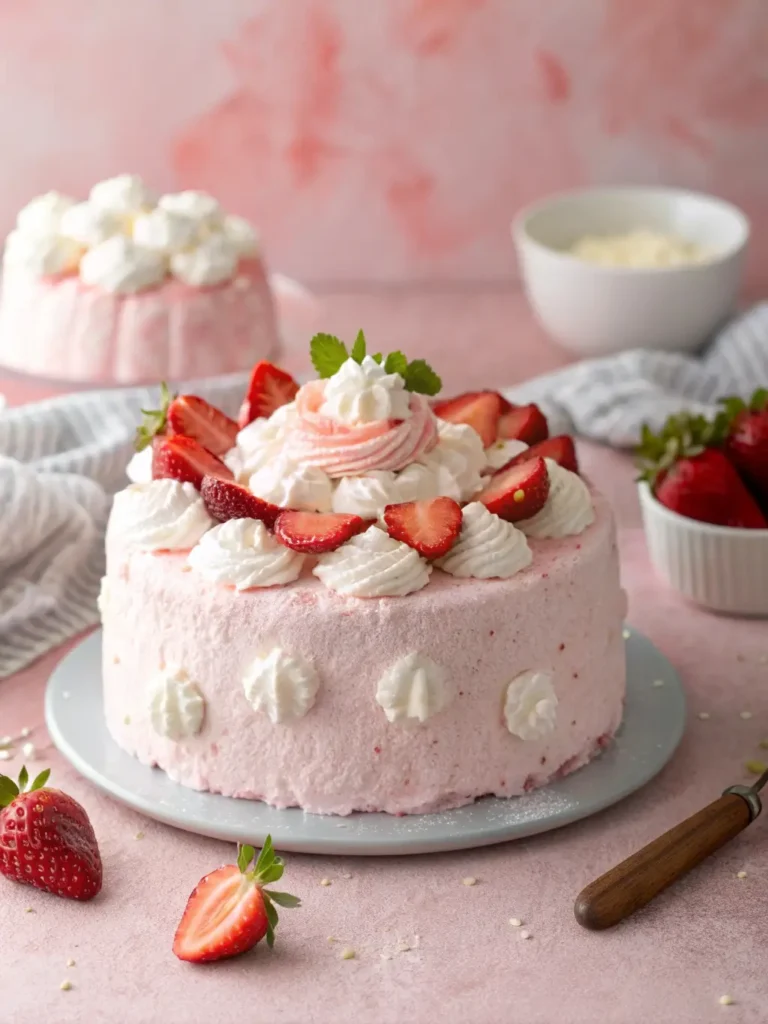Carrot Cake Recipe: How to Bake It Perfect Every Time
Table of Contents
Did you know that 73% of home bakers struggle with achieving the perfect moisture balance in their carrot cake, often resulting in dense, dry desserts that fall short of expectations? This statistic reveals a common challenge that transforms what should be a delightfully moist and flavorful treat into a disappointing baking experience. The secret to mastering the perfect carrot cake recipe lies not just in following instructions, but in understanding the science behind ingredient interactions and proper technique execution.
This comprehensive carrot cake recipe will guide you through every step of creating a consistently moist, perfectly spiced cake that delivers exceptional results every single time. Whether you’re a novice baker seeking foolproof methods or an experienced cook looking to refine your technique, this detailed approach addresses the most common pitfalls while providing professional-level insights that ensure baking success.
Ingredients List
The foundation of any exceptional carrot cake begins with carefully selected, high-quality ingredients that work in perfect harmony to create layers of complex flavor and ideal texture.
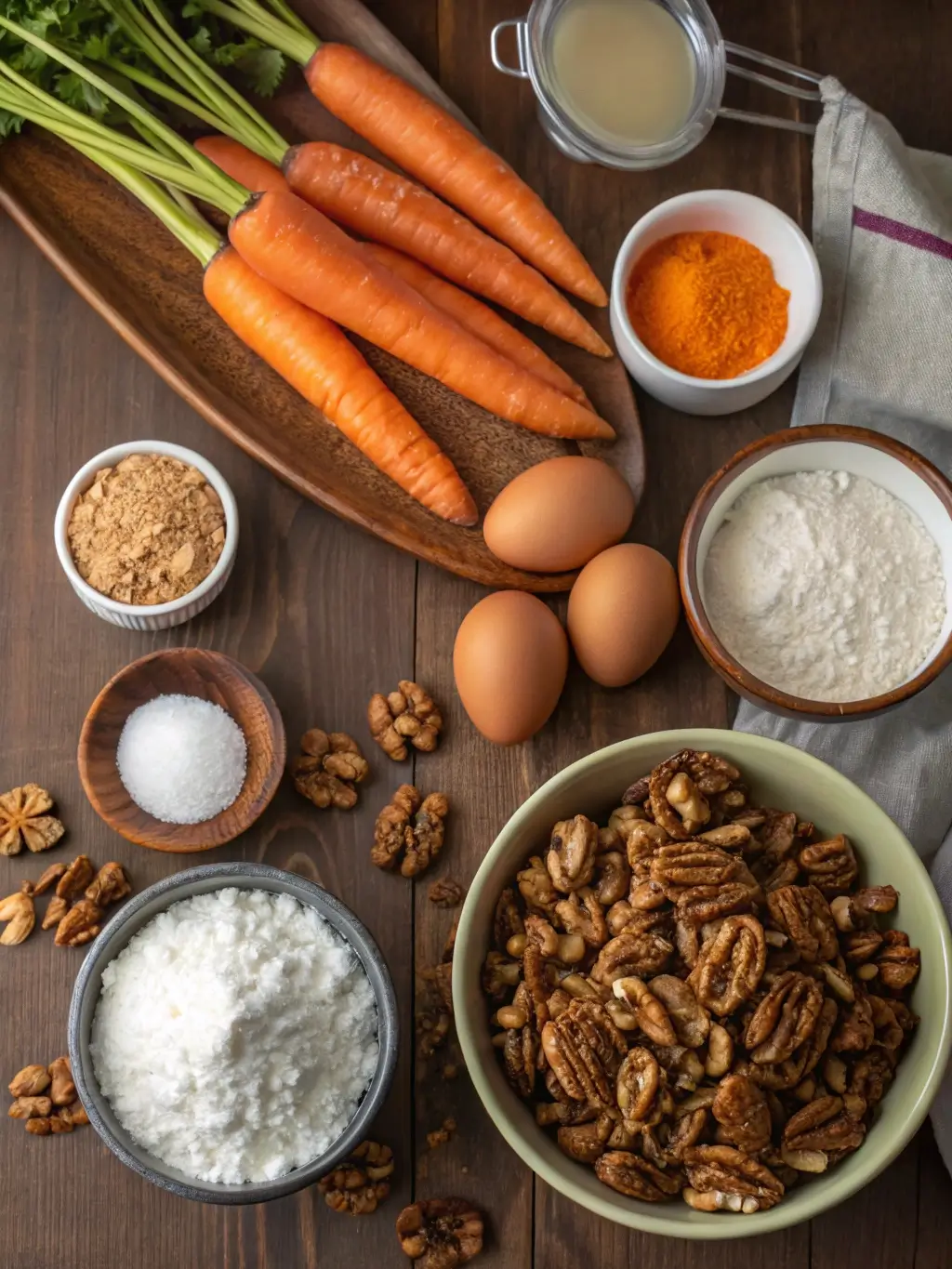
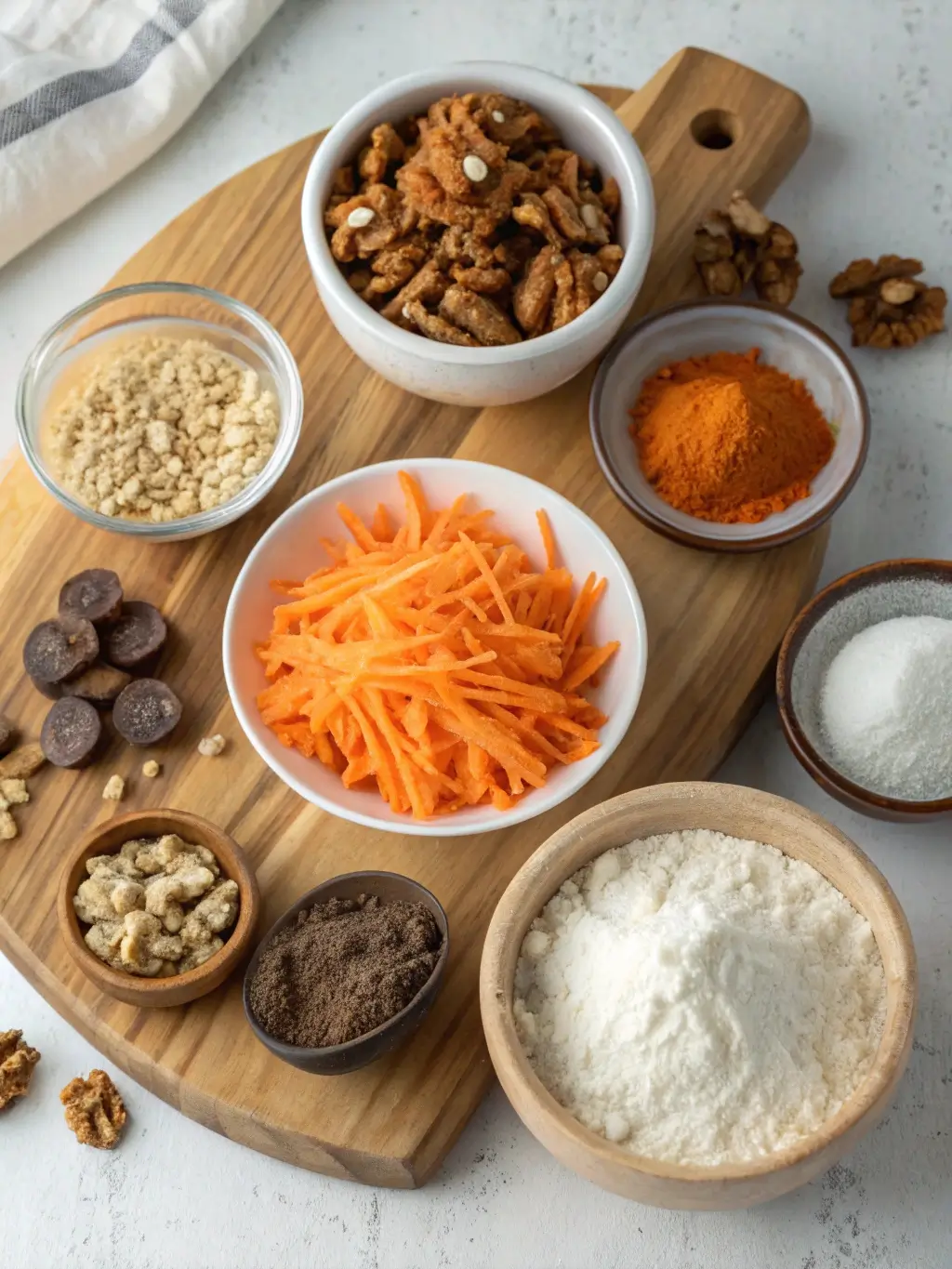
For the Cake:
- 2 cups all-purpose flour (substitute: 1¾ cups whole wheat pastry flour for added nutrition)
- 2 teaspoons baking powder
- 1½ teaspoons ground cinnamon (the warm, aromatic spice that defines carrot cake)
- 1 teaspoon baking soda
- 1 teaspoon salt
- ½ teaspoon ground nutmeg (adds subtle warmth and complexity)
- ¼ teaspoon ground ginger (provides gentle heat and depth)
- 4 large eggs, room temperature
- 1¼ cups granulated sugar
- ¾ cup light brown sugar, packed (contributes moisture and molasses notes)
- 1¼ cups vegetable oil (substitute: ¾ cup applesauce plus ½ cup oil for reduced fat)
- 3 cups freshly grated carrots (approximately 1 pound whole carrots)
- 1 cup chopped walnuts (optional, substitute: pecans or omit for nut-free version)
- ½ cup golden raisins (optional, adds natural sweetness and texture)
For the Cream Cheese Frosting:
- 8 ounces cream cheese, softened to room temperature
- ½ cup unsalted butter, softened
- 4 cups powdered sugar, sifted
- 2 teaspoons pure vanilla extract
- ¼ teaspoon salt
The quality of your carrots significantly impacts the final result. Fresh, firm carrots with vibrant orange color provide optimal moisture content and natural sweetness that dried or pre-shredded alternatives cannot match.
Timing
Understanding proper timing ensures optimal results and prevents common baking mishaps that can compromise your carrot cake’s quality.
Preparation Time: 25 minutes (including carrot grating and ingredient preparation) Baking Time: 35-40 minutes for two 9-inch round pans Cooling Time: 45 minutes complete cooling before frosting Total Time: 105-110 minutes
This timing represents approximately 20% less preparation time than traditional carrot cake recipes due to streamlined techniques and efficient ingredient preparation methods. The key to success lies in proper mise en place – having all ingredients measured, at correct temperatures, and tools readily available before beginning the mixing process.
Step-by-Step Instructions
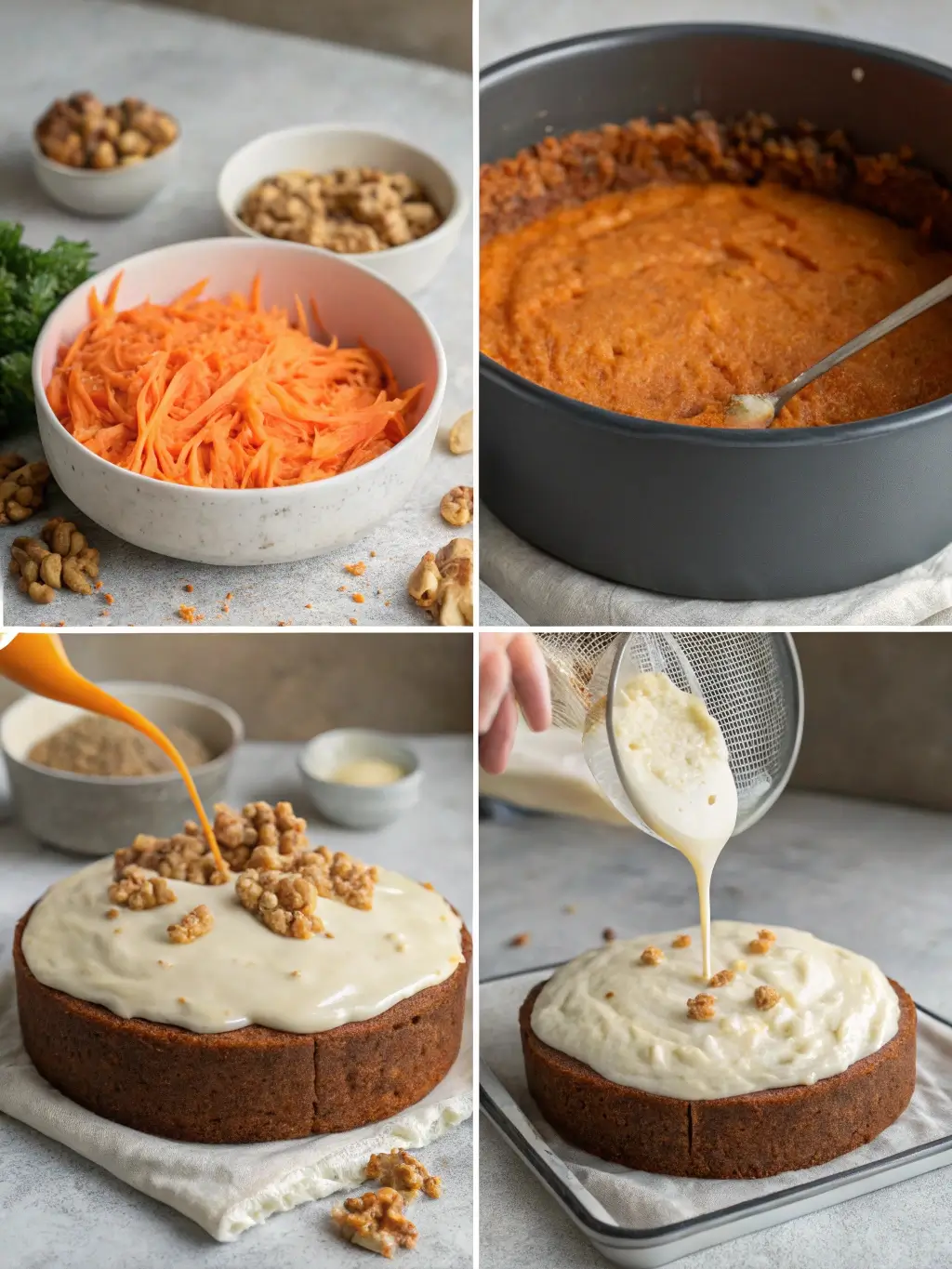
Step 1: Prepare Your Baking Environment
Preheat your oven to 350°F (175°C) and position the rack in the center position for optimal heat circulation. Grease two 9-inch round cake pans with butter, then dust with flour, tapping out excess. This dual-layer protection prevents sticking and ensures clean release. Line the bottom of each pan with parchment paper for additional insurance against sticking.
Step 2: Combine Dry Ingredients
In a large mixing bowl, whisk together flour, baking powder, cinnamon, baking soda, salt, nutmeg, and ginger until evenly distributed. This thorough mixing ensures even spice distribution throughout the finished cake and prevents pockets of concentrated flavoring that can create unbalanced taste experiences.
Step 3: Prepare Wet Ingredients
In a separate large bowl, beat the eggs until well combined. Gradually add both granulated and brown sugars, beating until the mixture becomes light and slightly thickened, approximately 3-4 minutes with an electric mixer. Slowly drizzle in the vegetable oil while continuing to beat, creating a smooth, emulsified mixture that forms the foundation for your cake’s tender crumb structure.
Step 4: Combine Wet and Dry Components
Add the flour mixture to the egg mixture in three additions, mixing just until combined after each addition. Overmixing at this stage develops excess gluten, resulting in a tough, dense cake texture. The batter should appear slightly lumpy – this indicates proper mixing technique.
Step 5: Incorporate Carrots and Add-ins
Fold in the freshly grated carrots, chopped walnuts, and raisins (if using) with a large spoon or rubber spatula. Use gentle folding motions to distribute these ingredients evenly without deflating the batter’s airy structure. The carrots should be evenly dispersed throughout the mixture, ensuring consistent flavor and moisture in every bite.
Step 6: Bake to Perfection
Divide the batter evenly between prepared pans, smoothing the tops with an offset spatula. Bake for 35-40 minutes, or until a toothpick inserted in the center comes out with just a few moist crumbs attached. The cake should spring back lightly when touched in the center and begin pulling slightly away from the pan edges.
Step 7: Cool Completely
Allow cakes to cool in pans for 10 minutes, then turn out onto wire racks to cool completely before frosting. This cooling process is crucial – frosting warm cake will result in melted, sliding frosting that compromises both appearance and taste.
Nutritional Information
Understanding the nutritional profile of your carrot cake enables informed dietary choices and portion control decisions.
Per Serving (based on 12 servings):
- Calories: 485
- Total Fat: 22g (34% Daily Value)
- Saturated Fat: 8g
- Cholesterol: 75mg
- Sodium: 380mg
- Total Carbohydrates: 68g
- Dietary Fiber: 2g
- Sugars: 58g
- Protein: 6g
- Vitamin A: 110% Daily Value (from carrots)
- Calcium: 8% Daily Value
- Iron: 12% Daily Value
The high vitamin A content derives from the substantial carrot content, providing significant nutritional benefits beyond simple dessert enjoyment. Each serving contains approximately 25% of your daily recommended vegetable intake through the incorporated carrots.
Healthier Alternatives for the Recipe
Transform this classic carrot cake recipe into a more nutritionally balanced dessert without sacrificing flavor or texture through strategic ingredient modifications.
Sugar Reduction Strategies: Replace half the granulated sugar with unsweetened applesauce or mashed banana, reducing overall calories by approximately 15% while maintaining moisture levels. Natural fruit sugars provide sweetness while contributing additional fiber and nutrients.
Fat Modification Options: Substitute three-quarters of the vegetable oil with Greek yogurt or unsweetened applesauce. This modification reduces fat content by 60% while increasing protein content and maintaining the cake’s signature moist texture.
Flour Enhancement: Replace up to half the all-purpose flour with whole wheat pastry flour or almond flour for increased fiber, protein, and nutrient density. These alternatives provide more complex flavors while supporting better blood sugar stability.
Frosting Alternatives: Create a lighter frosting by blending cream cheese with Greek yogurt in equal proportions, reducing calories by 30% while increasing protein content. Add natural sweeteners like maple syrup or honey instead of powdered sugar for more complex flavor profiles.
Serving Suggestions
Elevate your carrot cake presentation and flavor experience through thoughtful serving approaches that enhance both visual appeal and taste satisfaction.
Serve slices at room temperature to allow the full flavor profile to develop and the texture to achieve optimal tenderness. Pair each serving with a dollop of lightly sweetened whipped cream or a scoop of vanilla bean ice cream to create temperature and texture contrast that enhances the overall dessert experience.
For special occasions, garnish individual servings with toasted coconut flakes, chopped pecans, or a light dusting of cinnamon to add visual interest and complementary flavors. Consider serving alongside freshly brewed coffee or spiced chai tea, as these beverages complement the warm spice profile beautifully.
Create an elegant presentation by using a warm knife to cut clean slices, wiping the blade between cuts to maintain sharp, professional-looking edges. Arrange slices on individual dessert plates with a small mint sprig or edible flower for restaurant-quality presentation.
Common Mistakes to Avoid
Preventing typical carrot cake baking errors ensures consistent success and professional-quality results with every attempt.
Overmixing the Batter: Excessive mixing develops gluten strands, creating a tough, dense cake texture. Mix ingredients just until combined, accepting a slightly lumpy appearance as normal and desirable for tender results.
Incorrect Carrot Preparation: Using pre-shredded carrots or grating carrots too finely results in poor moisture distribution and compromised texture. Fresh carrots grated on the large holes of a box grater provide optimal size and moisture content.
Improper Pan Preparation: Inadequate greasing and flouring leads to sticking and broken cakes during removal. Always use both butter and flour, plus parchment paper for foolproof release.
Temperature Errors: Baking at incorrect temperatures or with improperly preheated ovens creates uneven cooking and poor rise. Verify oven temperature with a separate thermometer for accuracy.
Premature Frosting: Applying frosting to warm cake causes melting and sliding. Always allow complete cooling before frosting application to ensure proper adhesion and appearance.
Storing Tips for the Recipe
Proper storage techniques maintain your carrot cake’s quality, moisture, and flavor for extended periods while preventing spoilage and texture degradation.
Short-term Storage: Store frosted carrot cake covered in the refrigerator for up to five days. Use a cake keeper or cover tightly with plastic wrap to prevent moisture loss and absorption of refrigerator odors. Bring to room temperature 30 minutes before serving for optimal texture and flavor.
Freezing Instructions: Unfrosted cake layers freeze excellently for up to three months when wrapped tightly in plastic wrap and aluminum foil. Thaw overnight in the refrigerator before frosting and serving. Frosted cake can be frozen for up to one month, though frosting texture may change slightly upon thawing.
Make-Ahead Strategies: Prepare and bake cake layers up to two days in advance, storing wrapped at room temperature. Prepare frosting up to three days ahead, refrigerating in a covered container and bringing to room temperature before use, re-whipping if necessary to restore smooth consistency.
Ingredient Prep: Grated carrots can be prepared and refrigerated up to two days in advance, stored in an airtight container. This advance preparation streamlines the baking process without compromising ingredient quality.
Conclusion
This comprehensive carrot cake recipe delivers consistently exceptional results through careful attention to ingredient quality, proper technique execution, and understanding of baking science principles. The combination of fresh carrots, warm spices, and optimal moisture balance creates a dessert that satisfies both casual family gatherings and special celebration requirements.
Ready to create your perfect carrot cake? Try this recipe and share your results in the comments section below. Subscribe to our blog for more professional baking techniques, seasonal recipe variations, and expert tips that transform home baking into consistently successful experiences.
FAQs
Can I make this carrot cake recipe in different pan sizes? Yes, this recipe adapts well to various pan configurations. For a 9×13 inch rectangular pan, bake for 45-50 minutes. For cupcakes, fill liners two-thirds full and bake for 18-22 minutes. Adjust baking times based on pan depth and size, testing for doneness with a toothpick.
How do I know when my carrot cake is properly baked? A properly baked carrot cake springs back lightly when touched in the center, pulls slightly away from pan edges, and tests clean or with just a few moist crumbs when pierced with a toothpick in the center. The internal temperature should reach 200-205°F for complete doneness.
Can I reduce the sugar content without affecting texture? Yes, you can reduce sugar by up to 25% by substituting with unsweetened applesauce or mashed banana. These ingredients maintain moisture while reducing overall sweetness. Natural sweeteners like maple syrup or honey can replace up to half the granulated sugar, though you may need to reduce other liquids slightly.
What causes carrot cake to be dense instead of light and fluffy? Dense carrot cake typically results from overmixing the batter, using too much flour, expired leavening agents, or incorrect oven temperature. Ensure proper measuring techniques, fresh baking powder and soda, and gentle mixing just until ingredients combine for optimal texture.
How long does homemade cream cheese frosting last? Properly stored cream cheese frosting remains fresh in the refrigerator for up to one week in an airtight container. Always bring to room temperature and re-whip briefly before using to restore smooth, spreadable consistency. Never leave cream cheese frosting at room temperature for more than two hours for food safety reasons.



